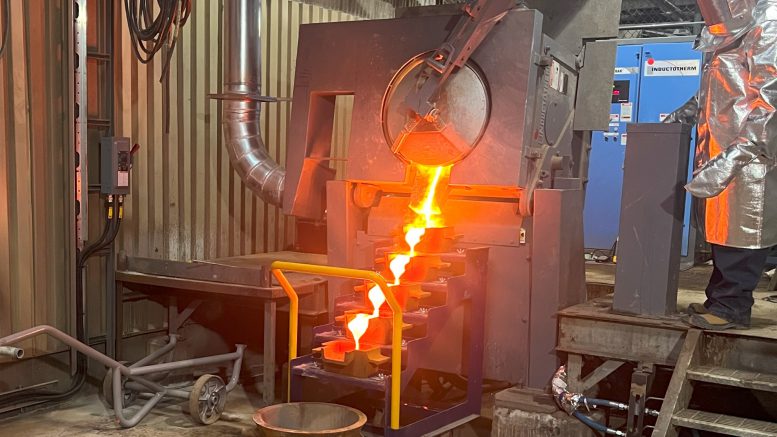
Over the weekend, Ascot Resources (TSX: AOT) poured first gold at its Premier gold project as part of the mine’s commissioning process, an event CEO Derek White says harkens back to its heyday a century ago as the British Empire’s largest.
“It’s a credit to our entire team’s effort that we’ve completed the construction phase and begun to pour gold, demonstrating that there’s viable gold in the Golden Triangle,” CEO Derek White told The Northern Miner Monday in an interview. “The first gold pour is a hallmark commissioning milestone for Ascot, representing the culmination of years of hard work,” he said.
Earlier this month, Ascot kicked off commissioning by feeding the first ore into the mill. Now, with the first gold recovered through the gravity circuit, commissioning activities have moved onto the carbon-in-leach (CIL) circuit.
Ascot expects to declare commercial production by Q3 this year, with total output from the restarted Premier project forecast to reach 1.1 million oz. gold and 3 million oz. of silver.
The Premier project is 25 km from the town of Stewart, within the Golden Triangle region of northwestern British Columbia. It is home to a former underground gold mine that opened in 1918 and included four deposits – Silver Coin, Big Missouri, Premier and Red Mountain.
While in operation, it was the largest gold mine in North America until its surface buildings burned down, leading to its closure in 1952. By then, the Premier mine had produced over 2 million oz. gold and 45 million oz. silver.
The Premier mill was later rebuilt by Westmin Resources in 1989, and mining from both the open pit and underground resumed until the project was put on care and maintenance in 1996. It produced about 260,000 oz. gold and 5.1 million oz. silver during that period.
Ascot’s path to production was fraught with challenges, White said. “We launched a project without any resources, feasibility studies, or groundwork. Over six years, we rapidly progressed from assembling resources and conducting engineering work to securing financing and managing construction,” he said.
Adding to the construction challenges, Ascot’s clarifier and thickener modules for the mill were lost in transit from Hong Kong in 2020, which fell into the sea in the North Pacific during a storm. The onset of Covid-19 shortly afterwards added to the company’s headaches.
After Ascot revived the gold operation, mining has resumed at the Silver Coin and Big Missouri deposits to feed a refurbished 2,500 tonne-per-day processing plant, which uses conventional crushing, grinding, and gravity circuits as well as a standard CIL process to produce doré bars.
Mining of the Red Mountain deposit will restart in year three, followed by the Premier deposit.
It hosts 7.3 million measured and indicated tonnes grading 7.85 grams gold per tonne and 29 grams silver, plus 5.4 million inferred tonnes grading 7.11 grams gold and 27.1 grams silver, according to the company’s 2020 resource estimate.